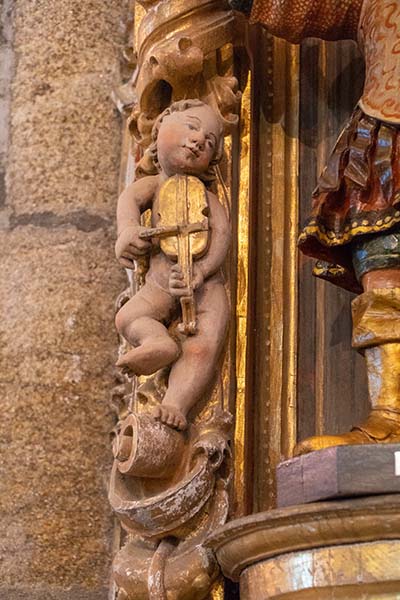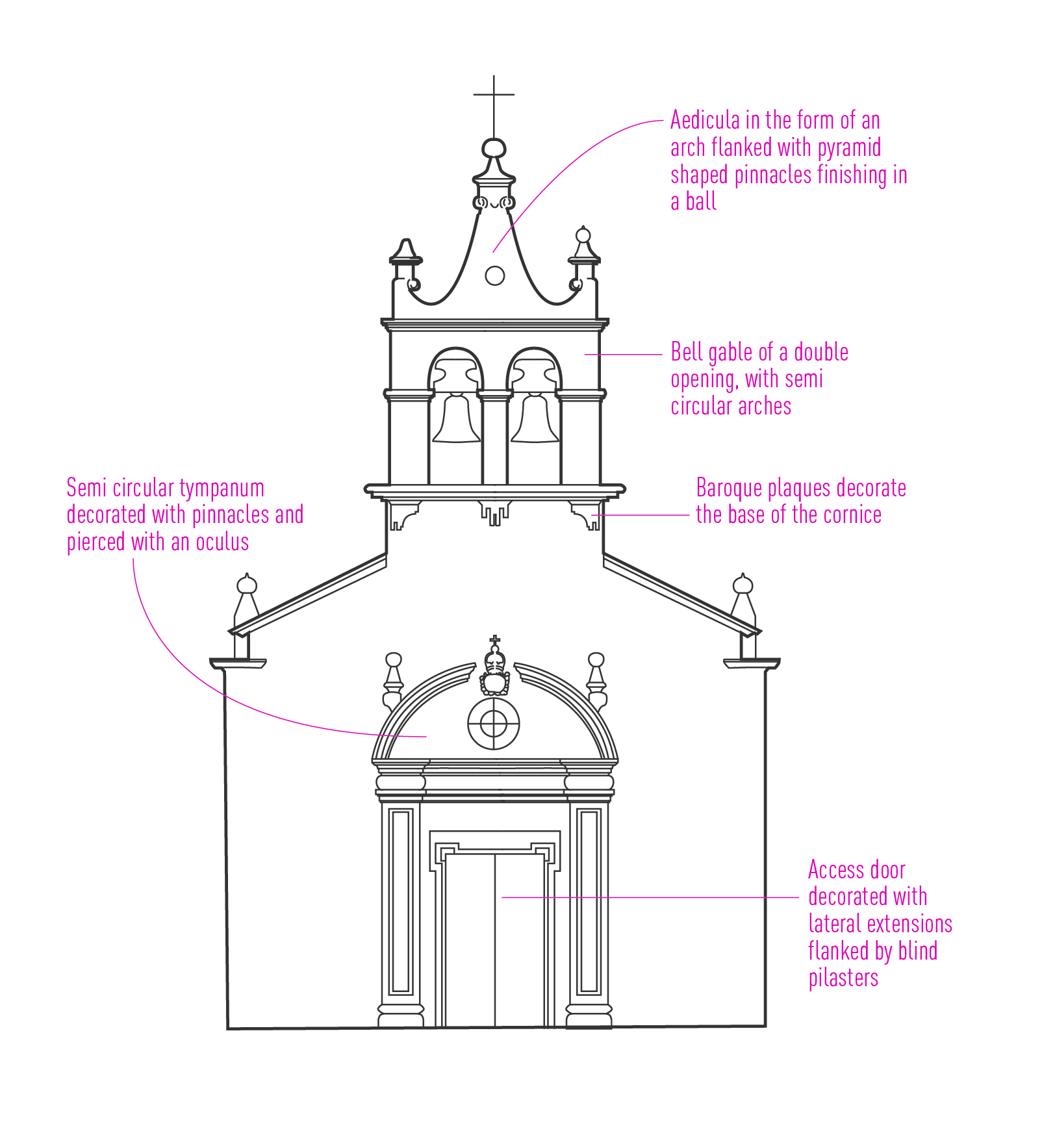
The temple of Saint Adrao is a notable example of rural baroque architecture. With a Latin cross-shaped floor plan, it is located north of the village, on a natural viewpoint that looks over the valley of the Camba River. It presents a nave of great proportions and once had at its side the rectory house, that is today in ruins.
Its facade centres the decoration on the main access door, decorated with lateral extensions and flanked by pilasters that support a classic entablature. On this is a semicircular split tympanum that appears decorated with pinnacles and pierced by an oculus of external effusion that is crowned by a key carved with an oval sign, crown, sphere and cross without figuration.
The composition is crowned by a double opening bell gable based on semicircular arches that support a curtain-shaped pediment bordered by original ball-shaped pyramidal pinnacles.
Inside, the altarpiece of the main altar, organized in three sections plus attic, is amazing. Incoming, outgoing, lights and shadows offer an image of dynamism and movement typical of the Baroque style.
The main niche welcomes the image of the titular saint (dressed in second fashion of the period) with a sword in his right hand and a key (today lost) on the left that alludes to his condition as patron of the guards.
Other treasures of the temple are the side altarpieces - the same style as the main one - named after the naked angels that decorate the pews, the intervals and the canopies. The naturalism and expressiveness of its diagonal postures fill this wooden architecture with feeling and liveliness. The musical angels are highlighted, with violas and guitars that are entirely gilded.
HADRIAN OR ADRAO

This was the name given to those born in the town of Adria or Hadria, an ancient port in the Adriatic Sea (a sea that takes its name from there). It became popular because of the Roman emperor Hadrian, in the II century. Saint Adrian
–Adrao in the local form– celebrated on September the 8th was a Roman officer of the Emperor Galerio´s Praetorian Guard.
In the III-IV century he was elected Caesar of the East by Diocletian in the year 293, which was passed on the side of the Christians, martyred in the year 303 in Nicomedia, at the time of Emperor Maximian.